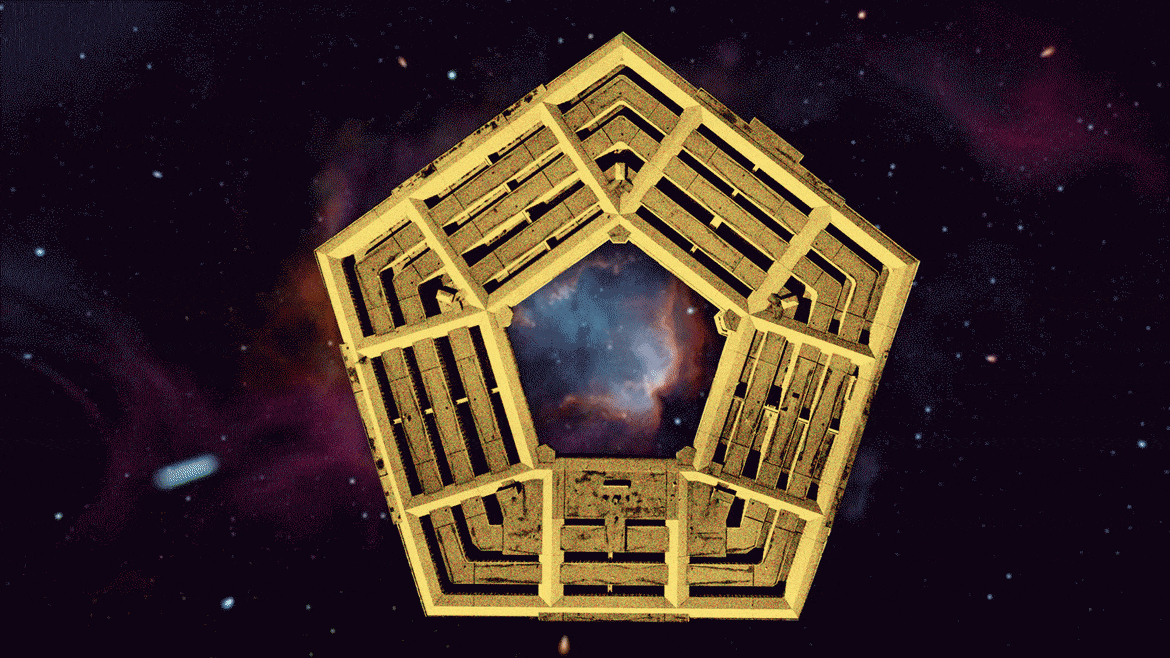Pentagon Admits Plan to Launch 1,300 Satellites Might Not Prevent Chinese or Russian Attacks

A new Pentagon space agency wants to launch nearly 1,300 small satellites and, in the process, totally reinvent the way the military operates in orbit.
The goal: to help the U.S. satellite constellation survive a sneak-attack by China or Russia. With hundreds of satellites in orbit, no single satellite is critically important, or so the thinking goes. If the Chinese or Russians were to knock out one or even dozens of satellites, scores more could take their place.
But the new “mega-constellation” plan from the Space Development Agency might not actually work. The agency’s own director, Fred Kennedy, said it probably was “no panacea” against an enemy attack.
It could be prohibitively expensive to deploy so many sats. Rocket launches are getting cheaper. But they might not yet be so cheap that the Pentagon could afford to conduct hundreds of them in a short span of time.
In any event, the agency’s plan is advisory. The Pentagon could just ignore it. But the idea is interesting if no for other reason than its contrarianness.
Today the U.S. military and other government agencies, universities and private companies together operate around 850 satellites, according to a count by the Massachusetts-based Union of Concerned Scientists. Second-place China has 280 satellites and Russia, in third place, has 150.
But America’s satellites increasingly are vulnerable to attack, according to military officials. “China and Russia both are building direct-ascent weapons that can shoot down our satellites,” U.S. Air Force general John Hyten, the head of U.S. Strategic Command, said on Tuesday at the annual Space Symposium conference in Colorado Springs.
“Direct-ascent weapon” is military parlance for “rocket.”
That’s not all. Hyten also said Russia and China also are building lasers that can blind American spacecraft and jammers that cut the satellites’ links to controllers on the ground plus “on-orbit” weapons—in essence, kamikaze satellites that can ram into American sats.
Not only are Moscow and Beijing building arsenals for taking down America’s space assets, they’re “doing it aggressively and quickly,” Hyten said.
To be clear, the U.S. military has anti-satellite weapons of its own. And American sats aren’t exactly defenseless. Starting in 2018, the Air Force spent a billion dollars adding “resilience features” to some of its spacecraft. Resilience features might include better thrusters, allowing the spacecraft to maneuver more quickly in order to avoid attack.
They may also include extra sensors on the spacecraft that act as a sort of orbital home-security system, monitoring the approach of potential assailants, according to James Oberg, an independent space expert and former NASA mission control specialist.
“Now that autonomous mini-satellites can approach other satellites, sometimes without detection from the ground, space-based detection must be installed on the potential targets,” Oberg told me. The sensors could include cameras, radars, radio-signal detectors and “sniffers” that can track the energy from other satellites' thrusters, Oberg added.
But the Space Development Agency, a small research organization that opened shop in March, wants to take a different approach. The Pentagon asked Congress for $150 million to fund the new agency through 2020.
Rather than beefing up individual spacecraft, under the mega-constellation plan the military would simply buy lots more small, inexpensive satellites, reinforcing or replacing the roughly 170 large, expensive sats the armed forces currently operate.
Speaking at the Colorado conference on Tuesday, Kennedy said he wants to see the Pentagon deploy “hundreds, perhaps even a thousand or more small satellites exhibiting a host of capabilities.”
A graphic Kennedy displayed broke down the numbers of different kinds of spacecraft in the proposed mega-constellation. In all, 1,258 small satellites would crowd low orbit, scanning the Earth and space and relaying radio communications. Three copies of an “advanced maneuvering vehicle”—presumably some version of the Air Force’s secretive X-37B robotic mini-shuttle—would orbit above the other sats.
Artificial intelligence would help ground-based controllers to maneuver and coordinate the hundreds of spacecraft, Kennedy said.
But the plan hinges on very cheap space launches. Lots of them. In 2018, U.S. entities launched just 31, mostly big, satellites—many of which might remain in orbit a decade or longer. Since small satellites might last just a year or two, to build the mega-constellation the military could need to expand its launch activities by a factor of 20.
It could be pricey. According to a 2018 paper by NASA researcher Harry Jones, the price per pound of a satellite launch has decreased from around $24,000 in the 1980s and 1990s to just $1,200 in 2019. But launching 600 or more satellites annually instead of 30 could more than offset the falling per-pound price of a launch.
Kennedy acknowledged the downsides of his agency’s satellite plan. “We recognize that this isn’t the sum total of the nation's space construct,” he said. "We should not jump to extremes.”
But even experimenting with a new approach to deploying satellites could result in better technology and methods that could make it harder for Russia or China to knock out America’s spacecraft, Kennedy said. “This puts us on a wonderfully disruptive path.”
Kennedy said his agency would begin conducting conducting war games in order to test out the mega-constellation concept starting in 2022.

